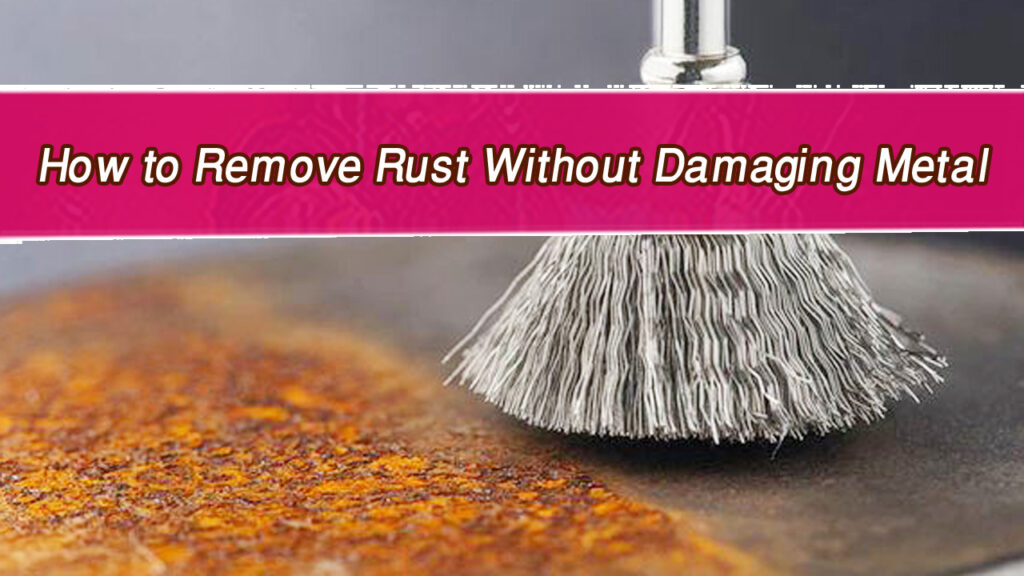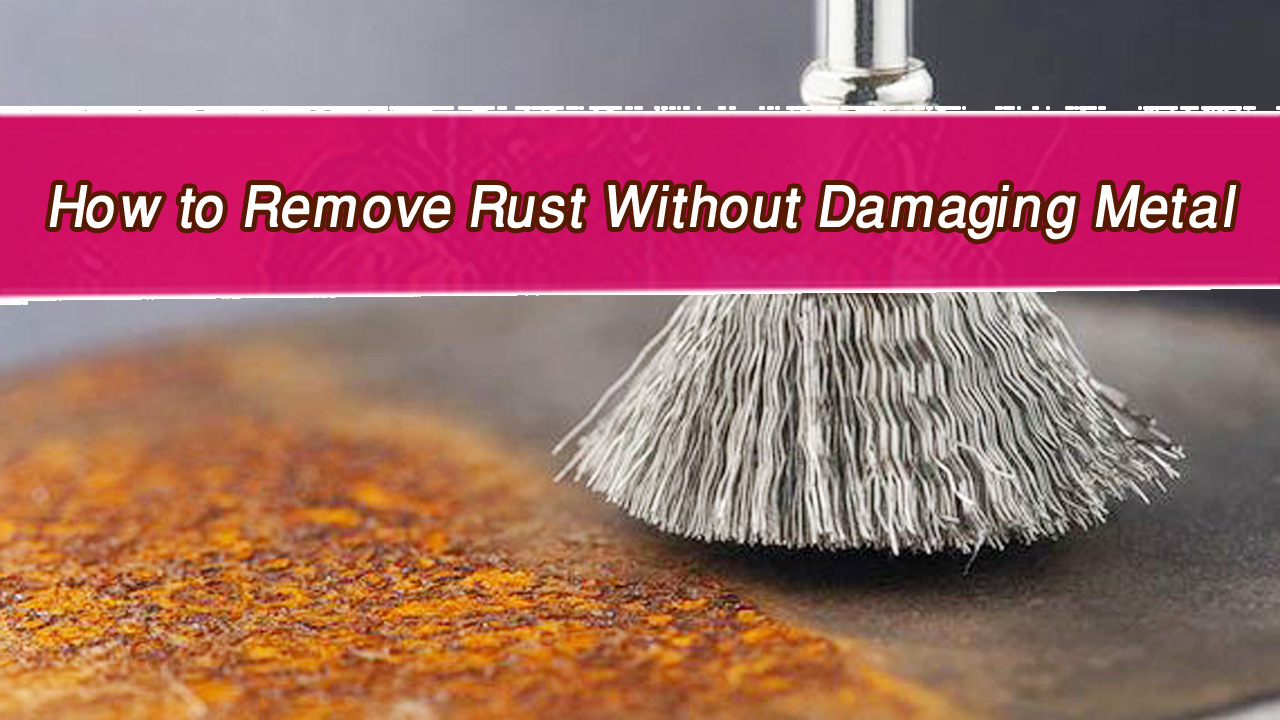
What Can I Use to Remove Rust? A Comprehensive Guide
Rust, the reddish-brown iron oxide, is the bane of many a homeowner, mechanic, and DIY enthusiast. It forms when iron or its alloys, like steel, are exposed to oxygen and moisture. While a little surface rust might seem harmless, left unchecked, it can weaken metal structures, compromise functionality, and generally make things look unsightly. The good news is that there are numerous effective methods and products available to tackle this corrosion. So, what can I use to remove rust? Let’s delve into a comprehensive exploration of rust removal techniques, from household solutions to specialized products.
Understanding Rust and Its Impact
Before diving into the solutions, it’s crucial to understand what rust is and why it’s important to address it promptly. Rust is essentially iron oxide, a compound formed through a chemical reaction called oxidation. This process occurs when iron reacts with oxygen in the presence of water or moisture. The resulting rust is porous and flaky, unlike the strong, metallic iron it once was. This porosity allows further oxygen and moisture to penetrate the metal, accelerating the corrosion process. Ignoring rust can lead to:
- Weakened structural integrity of metal objects
- Reduced functionality of tools and equipment
- Aesthetic degradation
- Potential safety hazards (e.g., rust-weakened railings or ladders)
Household Solutions for Rust Removal
Many common household items can effectively remove light to moderate rust. These methods are often cost-effective and readily available.
Vinegar
Vinegar, specifically white vinegar, is a mild acid that reacts with rust, loosening it from the metal surface. Submerging the rusted object in vinegar for several hours, or even overnight, can work wonders. After soaking, scrub the object with a brush or steel wool to remove the loosened rust. For larger items, you can soak a cloth in vinegar and apply it to the rusted area, securing it with plastic wrap to keep it moist.
Baking Soda
Baking soda is a mild abrasive that can gently remove rust without damaging the underlying metal. Make a paste of baking soda and water, apply it to the rusted area, and let it sit for a few hours. Then, scrub with a brush or steel wool. Baking soda is particularly effective on delicate surfaces where harsher abrasives might cause scratches.
Lemon Juice and Salt
The citric acid in lemon juice, combined with the abrasive action of salt, can effectively remove rust. Sprinkle salt on the rusted area, then squeeze lemon juice over it. Let it sit for a few hours, then scrub with a brush or steel wool. This method is best for light rust and smaller areas.
Potatoes and Dish Soap
Believe it or not, potatoes contain oxalic acid, which can help dissolve rust. Cut a potato in half, apply dish soap to the cut surface, and scrub the rusted area. The oxalic acid reacts with the rust, while the dish soap helps to lift it away. Reapply soap as needed and continue scrubbing until the rust is removed.
Citric Acid
Citric acid, often found in powdered form, is a more potent acid than vinegar or lemon juice. Dissolve citric acid in warm water and soak the rusted object in the solution for several hours. After soaking, scrub with a brush or steel wool. Citric acid is particularly effective for removing rust from intricate or hard-to-reach areas. [See also: How to Clean Rusty Tools]
Commercial Rust Removal Products
For more stubborn or extensive rust, commercial rust removal products may be necessary. These products are formulated with stronger chemicals that effectively dissolve rust.
Rust Converters
Rust converters don’t actually remove the rust; instead, they chemically convert it into a stable, inert compound. This compound forms a protective layer that prevents further corrosion. Rust converters are typically applied to the rusted surface and allowed to dry. They’re a good option for areas where complete rust removal is difficult or impractical.
Rust Removers (Chemical Solutions)
Chemical rust removers are designed to dissolve rust completely. They typically contain acids, such as phosphoric acid or hydrochloric acid, which react with the rust and break it down. These products are available in liquid, gel, and paste forms. Always follow the manufacturer’s instructions carefully and wear appropriate safety gear, such as gloves and eye protection, when using chemical rust removers. [See also: Best Rust Removal Products on the Market]
Abrasive Blasting
Abrasive blasting, also known as sandblasting or media blasting, uses compressed air to propel abrasive particles, such as sand, glass beads, or walnut shells, against the rusted surface. This method is highly effective for removing rust from large areas or heavily rusted objects. However, it requires specialized equipment and can be messy.
Electrolysis
Electrolysis is a process that uses an electric current to remove rust. The rusted object is submerged in an electrolyte solution and connected to the negative terminal of a power source. A sacrificial anode, typically made of steel, is connected to the positive terminal. When the electric current is applied, the rust is drawn away from the object and deposited on the anode. Electrolysis is a relatively slow but effective method for removing rust from intricate or delicate objects.
Tools and Equipment for Rust Removal
In addition to the solutions mentioned above, certain tools and equipment can aid in the rust removal process.
- Wire Brushes: Available in various sizes and materials, wire brushes are useful for scrubbing away loose rust and debris.
- Steel Wool: Steel wool is more abrasive than wire brushes and can be used to remove more stubborn rust.
- Sandpaper: Sandpaper comes in different grits, allowing you to progressively remove rust and smooth the surface.
- Power Tools: Power tools, such as angle grinders and rotary tools, can be fitted with wire brushes or sanding discs for faster and more efficient rust removal.
- Safety Gear: Always wear appropriate safety gear, such as gloves, eye protection, and a respirator, when removing rust, especially when using chemical products or power tools.
Preventing Rust
Prevention is always better than cure. Taking steps to prevent rust from forming in the first place can save you time, effort, and money in the long run. Here are some tips for preventing rust:
- Keep Metal Surfaces Clean and Dry: Wipe down metal surfaces regularly to remove moisture and contaminants that can promote rust.
- Apply Protective Coatings: Apply paint, varnish, or rust-inhibiting coatings to metal surfaces to create a barrier against moisture and oxygen.
- Use Rust Inhibitors: Add rust inhibitors to water or other liquids that come into contact with metal surfaces.
- Store Metal Objects Properly: Store metal objects in a dry, well-ventilated area to minimize exposure to moisture.
- Consider Galvanization: For certain applications, consider using galvanized steel, which is coated with a layer of zinc to protect it from rust.
Choosing the Right Method: What Can I Use to Remove Rust Based on the Severity?
The best method for rust removal depends on the severity of the rust, the size and type of object, and your personal preferences. For light surface rust, household solutions like vinegar or baking soda may be sufficient. For more stubborn or extensive rust, commercial rust removal products or abrasive blasting may be necessary. Always consider the potential risks and benefits of each method before proceeding.
Safety Precautions
When dealing with rust removal, safety should always be a top priority. Always wear appropriate safety gear, such as gloves, eye protection, and a respirator, especially when using chemical products or power tools. Work in a well-ventilated area to avoid inhaling fumes. Follow the manufacturer’s instructions carefully when using commercial rust removal products. Dispose of waste materials properly. By taking these precautions, you can protect yourself from potential hazards and ensure a safe rust removal process. Understanding what can I use to remove rust also means understanding how to do so safely.
Conclusion: Rust Removal is Achievable
Rust may be a common problem, but it’s not an insurmountable one. With the right knowledge, tools, and techniques, you can effectively remove rust from a wide range of objects and surfaces. Whether you choose to use household solutions, commercial rust removal products, or a combination of both, the key is to be patient, persistent, and to follow safety precautions. By addressing rust promptly and effectively, you can protect your valuable metal assets and ensure their longevity. So, now you know what can I use to remove rust, get out there and tackle that corrosion!

